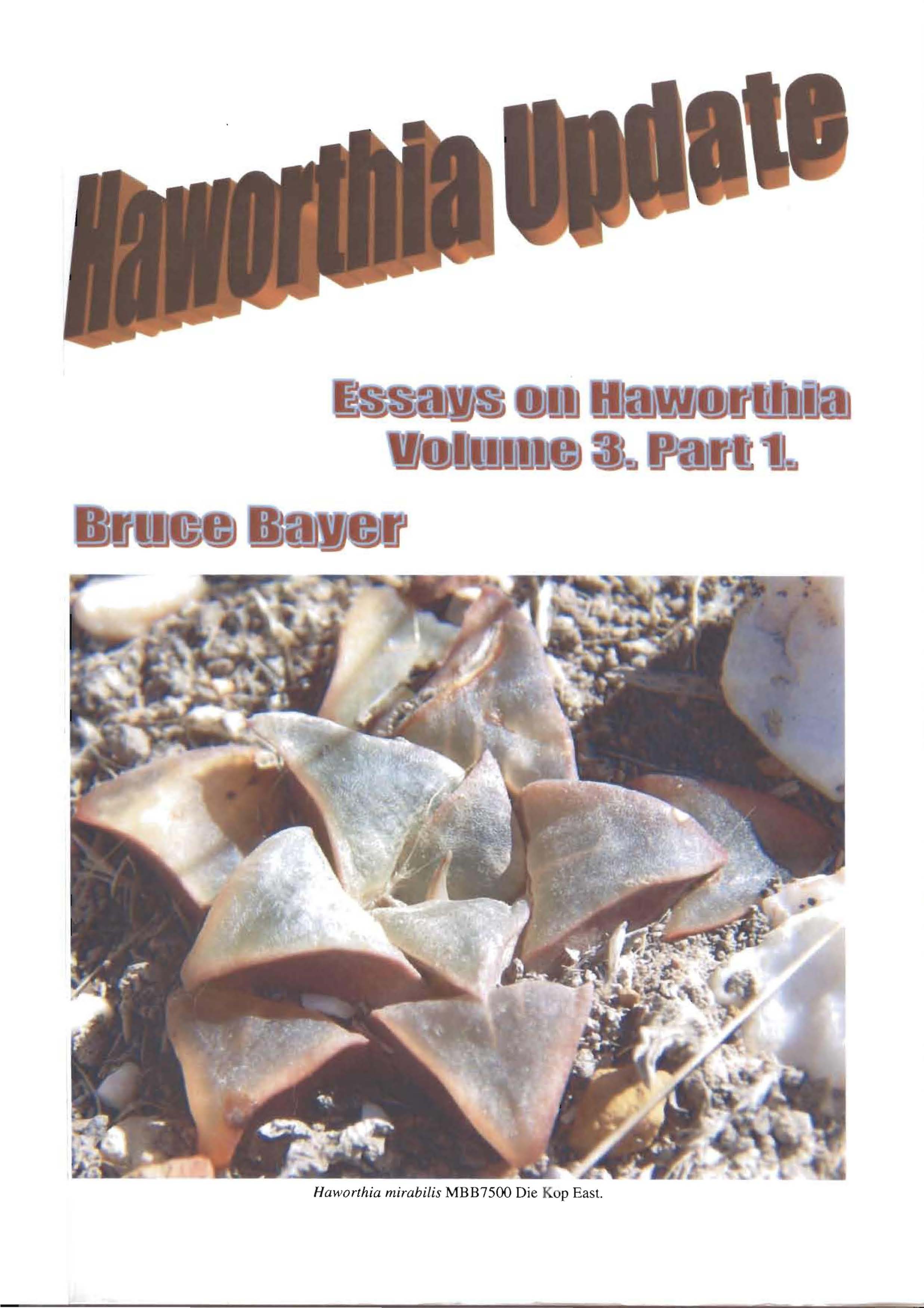The problems of species classification of Haworthia should now be well known to all enthusiasts of this interesting genus. I have proposed and maintained, with cosmetic changes, a nomenclatural system for it since 1975. It is a system with which I have managed an extensive collection and herbarium record, and I know it works within the limitations imposed by the evident fractal nature of “species” and their variability. In this paper I would like to expose these limitations with respect to the concept of two species viz. Haworthia mirabilis, and Haworthia maraisii, where there may be only one. (In the original hardcopy publication of this article, the illustrations are all captioned H. maraisii when it would have been sensible to have used H. mirabilis).
In most discussions concerning the classification of Haworthia, participants have suggested that there are too many species and that some of them should be “lumped”. On the other hand, there have been several writers who, as prospective taxonomists and experts on the group, continue to expand the range of entities at the formal rank of species and varieties despite all the evidence and indications that this could be an endless path leading nowhere. My own inclinations have been to minimize the number of species and to use varietal rank in two ways as a communication medium. One is that I have tended to reject varieties of older authors which I did not think had a strong enough geographical base, but also recognizing that there is nevertheless some information inherent in such names. Often I felt these varieties simply expressed the variability in a way that was insignificant with respect to the species as a whole. Two, is that I have described some new varieties to provide names for morphological variation that I consider is new and previously unrecognized, accepting that these names should perhaps not be immortalized either. Thus my proviso has been that these new varietal names should not be taken too seriously. As far as the number of species is concerned, I know full well that there could be fewer species. I get caught up in the problem of identifying a “species” in a strict botanical definition of the word, as opposed to the need for “names” as a way of simple communication about the plants in the amateur fraternity. Because of the problem of similarity and continuity, the elimination of names becomes similar to that of falling dominoes and the question then arises of “where does it end?” My classification should not be confused with a system of names intended for horticulture or for trade. But neither do I think such a system should adulterate a formal botanical one.
Therefore, underpinning this presentation is a definition of a species as dynamic systems of living organisms morphologically, genetically and even behaviorally, continuous in space and time.
Continue reading →

